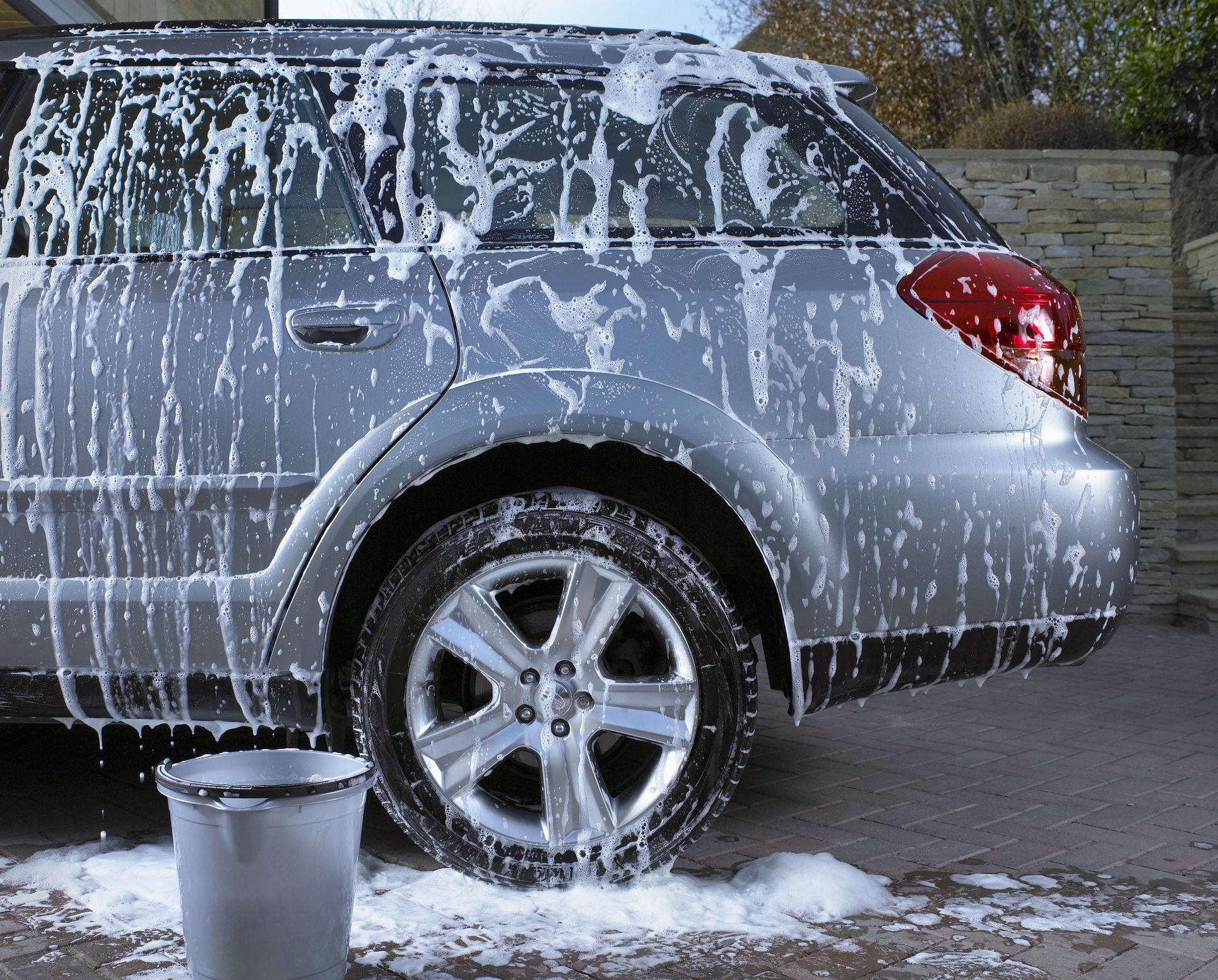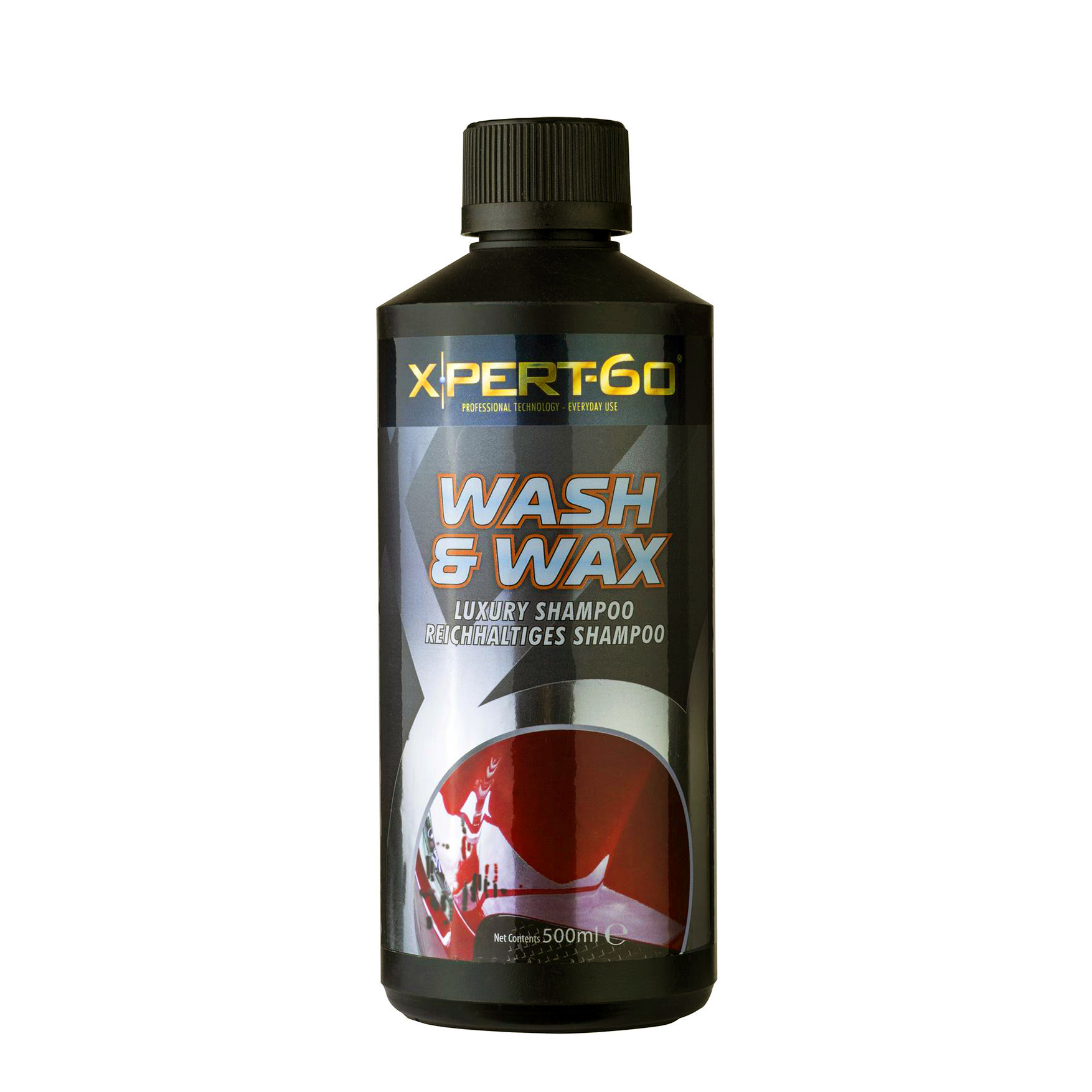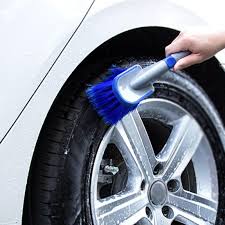Washing your car is a great way to spend time, giving you the opportunity to inspect every detail of the vehicle — it’s the only way to truly know the condition of your car, and, of course, the result is always worth it!
Often, car washing is done incorrectly — as a result, the car may not be truly clean, or the car’s paintwork may be damaged, causing the car to fade and lose its appearance over several washes.
For high-quality and safe car washing, it’s wise to follow a few tips that will prevent paint damage and, most importantly, provide a better result! Various aspects to consider are outlined below.
Car Cleaning Supplies
Car washing starts with choosing the right tools. The right tools also ensure safer washing, so choose a suitable sponge, cloth, shampoo, and brush for the job.
It’s important not to use sponges or cloths designed for household cleaning when washing your car. Household cleaning items are designed to repel surface dirt, but washing a car would mean immediate damage. Sand particles, dust, and other dirt on the car’s body damage the paintwork, creating scratches, which are more serious paint damages and require polishing to fix. Sponges and cloths designed for car washing absorb dirt and release it into the rinse bucket only when they come into contact with water.
Car Shampoo
The most common mistake when washing a car is using dish soap. Why is this a mistake? — Because dish soaps contain a lot of abrasive substances. Other household soaps or detergents should also not be used, as they are usually too alkaline or acidic for car washing. This damages the surface and also removes the protective car wax.
The best and safest results can be achieved by using shampoos specifically designed for car washing, which are pH-neutral and contain anti-stick agents that help dirt slide off the surface without damaging it. It is also possible to use “Nano Shampoo,” which has a very high wax content and perfectly refreshes the waterproof protective layer of a waxed car. You can get a more detailed overview of car chemicals here.
Essential Accessories
A quality car wash requires a range of accessories. Be sure to bring several wash cloths, a drying cloth, detergent, and 2 buckets. If you also plan to wax or polish, you will need waxing and polishing tools and accessories.
List of Required Accessories:
- Car wash mitts, Car wash sponge – for body washing;
- Detailing brush – for washing tires and mats;
- Wash buckets – one for shampoo water and the other for clean water;
- Car shampoo;
- Wheel cleaner;
- Drying towel made of chamois or microfiber;
- Compressor – for compressed air drying (possibly for drying crevices);
- Sand remover;
- Insect remover;
- Speed wax / Permanent wax / Nano protection (for advanced work)
- Polishing equipment (for particularly meticulous work)
Car Washing
A well-known basic principle of washing is to keep the car wet throughout the entire washing process. This is important to prevent unsightly water spots from drying on the car, which are difficult to remove later. To prevent the car from drying too quickly, choose a shady spot to wash it, and make sure you don’t leave any windows open ;)
1. Start by removing tar from the car!
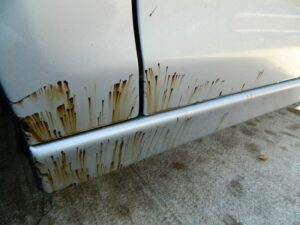
It is wisest to start with this wash (tar removal), because the product works much faster and more effectively on a dry car than on a wet one. For sand soaking, it is recommended to use the most neutral sand washing agent “Winter Wash” — it is safe for seals, chrome parts, and license plates!
1. Spray the car with the tar remover. The sides of the car above the door handles do not need to be soaked, and the rear part of the car should be coated with the chemical up to the highest edge — there’s still plenty of tar ;) The hood and the front of the car also do not need to be soaked.
2. Allow to act for 3-5 minutes and, if necessary, apply a second layer of the product, as described in point 1, and allow it to work for another 3 minutes.
3. Use a pressure washer to wash off the soaked-in tar from the car. Rinse the surfaces in sections, starting from the bottom edge. If you start rinsing from the top, you might rinse off the lubricant, leaving tar on the surface.
2. Now perform a normal car pre-soak!
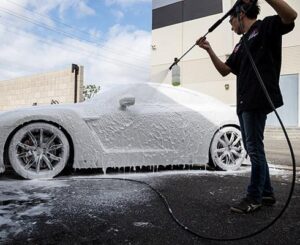
After tar removal, some spots may remain on the car, which will be removed in subsequent steps.
1. After removing contaminants, pre-soak the car and leave for 3 minutes. (DELTA FORCE 2000)
(1.1) Meanwhile, clean the tires and floor mats with a brush
2. Rinse the car from top to bottom to wash off all loose dirt and sand particles.
3. Also rinse the tires, rims, and wheel wells thoroughly.
3. WHEEL CLEANING
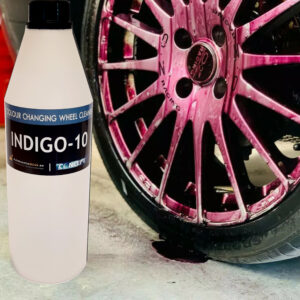
Wheel rims are the dirtiest part of the car, so it’s important that all major dirt is thoroughly removed from the corners during the initial rinse. Now perform a deeper wash.
1. Apply wheel rim cleaner and allow it to act according to the instructions.
2. Thoroughly clean the wheel rims with a brush or a separate sponge.
3.Rinse the wheel rims.
By starting the wash with the wheel rims, dirt from the rims won’t later get onto the clean bodywork. If the car’s wheels are very dirty, it is recommended to wash them with a brush. For cleaning cleaner wheel rims, you can use a separate wash pad or applicator of the same type as for body cleaning. To avoid damaging the car’s bodywork, make sure you don’t use the same cleaning tools for the car that you used for the wheels.
4. Re-wet the car with water
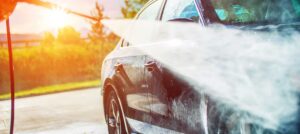
After washing the wheel rims, it’s time to wash the bodywork. Before doing so, re-wet the car with water to soften any dirt that has dried on the car. You don’t need to use strong pressure, just a light rinse.
5. Wash the car in a well-planned sequence.
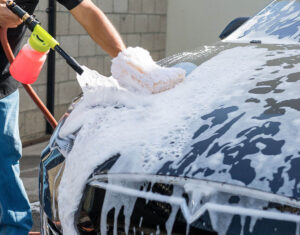 When washing the car, it’s wise to perform the washing step in sections. Start applying shampoo from the roof and work your way down in sections. This is important so that the shampoo, as it runs down, helps to absorb any unwashed dirt.
When washing the car, it’s wise to perform the washing step in sections. Start applying shampoo from the roof and work your way down in sections. This is important so that the shampoo, as it runs down, helps to absorb any unwashed dirt.
6. Also clean your wash tool during the washing process.
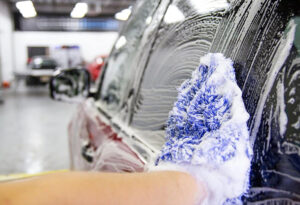
Start by saturating the sponge or wash mitt with shampoo water to wash the unwashed body part. Every few minutes, rinse the tool in a bucket of clean water. This will help rinse excess dirt from the pad or wash cloth, preventing accidental damage to the car. After rinsing, re-dip into the shampoo water and wash the next section.
7. Avoid water spots by rinsing the car thoroughly during the wash.
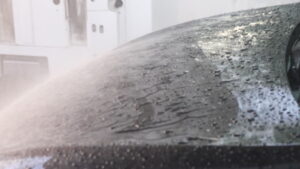
After the cleaning agent has been applied, rinse it off with clean water to prevent the shampoo from drying on the vehicle’s surface. It dries unpleasantly on the surface and is much harder to remove later.
8. DO NOT LET THE CAR DRY IN THE WASH BAY.
Avoid the car drying out, and if washing the car with shampoo and a sponge takes longer than expected, don’t forget to re-wet the car periodically. Otherwise, if you wash a dried surface with a sponge, scratches will remain on the car’s surface, and the paint will fade.
9. Car Drying
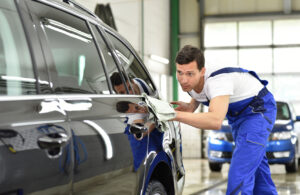
Start drying the car only after the entire car has been washed and rinsed. For drying, it is best to use a highly absorbent chamois cloth to remove 90% of the water, and large microfiber drying towels to complete the drying. If you only use microfiber cloths, you should be aware that the cloths will get wet during the drying process, and you will need to have several pieces.
During drying, pay special attention to door handles, license plates, side mirrors, and other similar areas where water can drip.
For cleaning difficult areas, a compressed air compressor can be used (if available). The compressor allows water to be easily expelled from hidden crevices and immediately dried with microfiber.
10. Car Waxing and Polishing
If you have taken meticulous care of your car and plan to treat it with a protective coating or even remove scratches and polish it — now is the right time to do it.
By using wax or a nanoprotectant, a protective layer is created on the car, which protects it from scratches and keeps the surface cleaner. Additionally, the protective coating gives the surface a deeper shine.
If the car is scratched and not shiny enough, a polishing layer is applied before applying the protective coating.
* Polishing differs from waxing in that, using an abrasive paste, the paintwork is buffed – thus, there are no more scratches, and the car shines like new!
* Waxing is a gentle protection that, when applied, creates a thin protective layer on the car but does not remove scratches.
* Nano protection provides a hard and durable chemically resistant protective layer on the car’s surface but does not remove scratches.
How often should you wash your car?
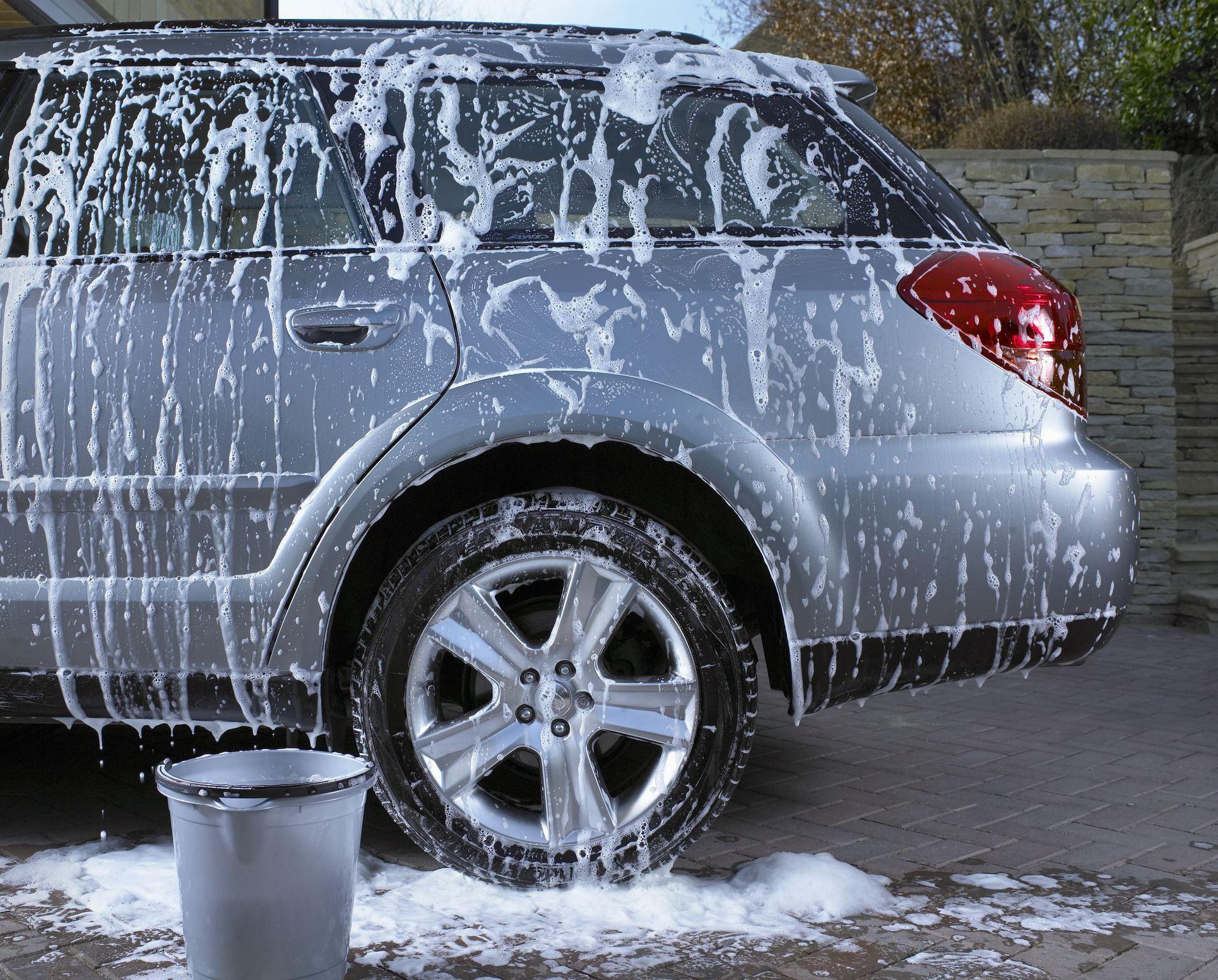
The frequency of washing is, of course, not constant and depends on many different factors, such as travel routes, frequency of trips, chosen parking spots, etc… Therefore, the washing frequency still depends on individual needs and varies for everyone.
NB !! YOU SHOULD DEFINITELY WASH YOUR CAR IF YOUR CAR HAS:
- Insect remains on the hood and front end: insect carcasses on the car look very bad, and worst of all, they damage the paintwork. Therefore, during the warm season, when there are more insects, it’s worth paying close attention. (For easy insect removal, there is a separate car cosmetic product: INSECT REMOVER).
- Bird droppings: those who have encountered them know! In hot weather and direct sunlight, they dry very quickly on the car, leaving an unsightly stain on the paintwork. If they occur, it’s not worth waiting, and it’s best to wash them off as soon as possible. Bird droppings etch an unsightly stain into the paint in a very short time. If stains have already formed, the surface needs to be polished.
- Tree sap: if the parking spot where you usually park your car is under a tree, if possible, choose another spot, because tree sap can start to damage the paint, and tree sap will also stick to the car, plus it’s not easily removed with a regular wash. If the situation has already occurred, it would be useful to perform clay treatment with Car Cleaning Clay.
- Salt on roads in winter: In Estonia, salt is used in winter to maintain roads in good condition, which is not good for cars. Also in winter, it’s worth regularly rinsing the car and protecting it with a protective coating.
- WINTER TAR????: Yes! Only in winter conditions! Cars accumulate 90% more tar on their bodywork in winter than in summer. Studded tires scratch off small pieces that stick to the car’s surface. However, it’s worth keeping an eye on it during winter and thoroughly removing it in spring. Read more about tar removal HERE!
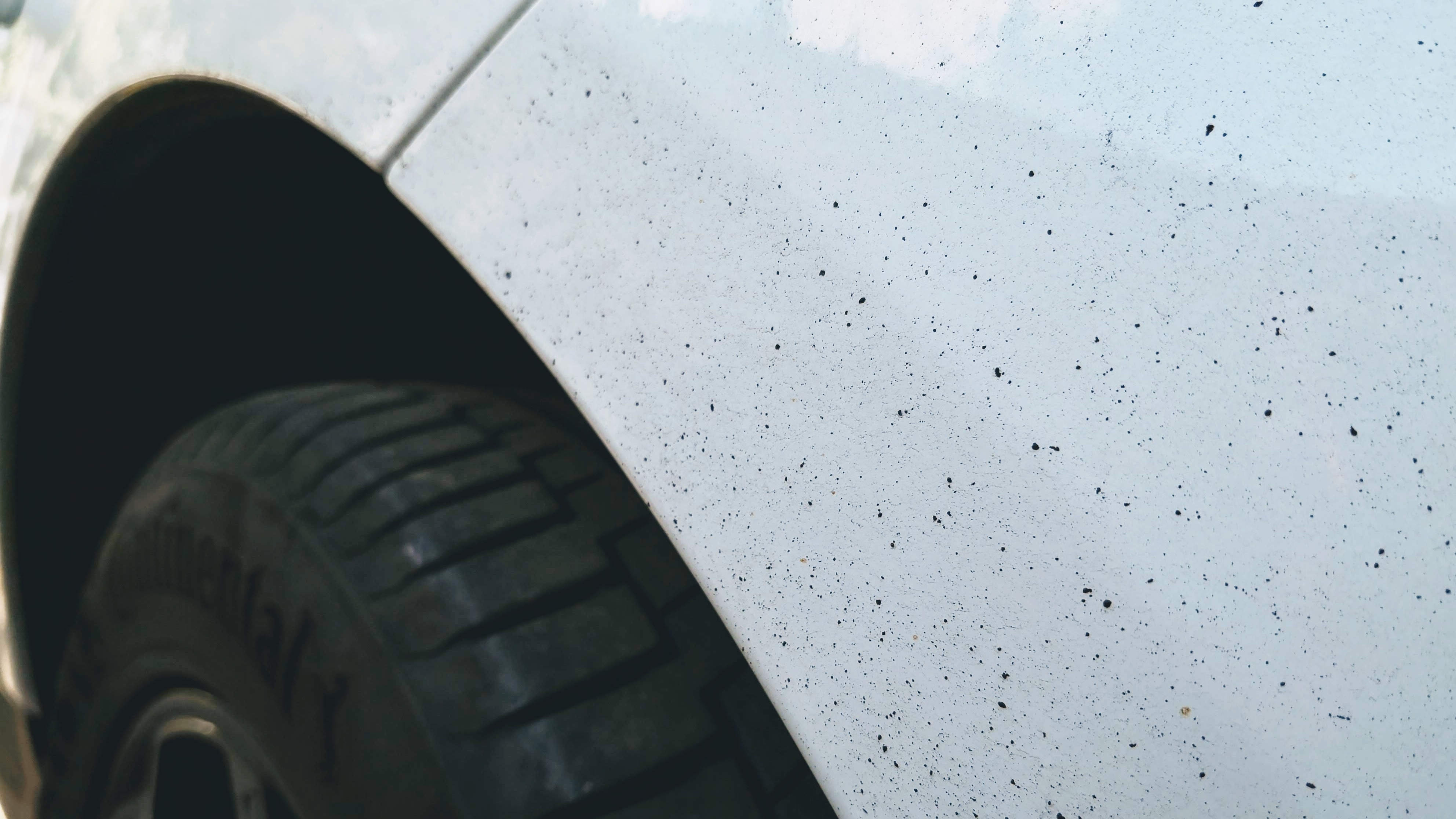
WINTER PIGGY BANKS

